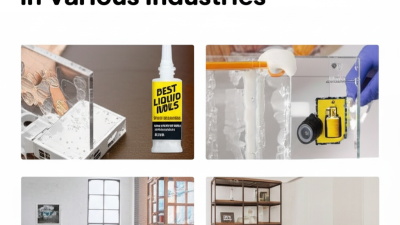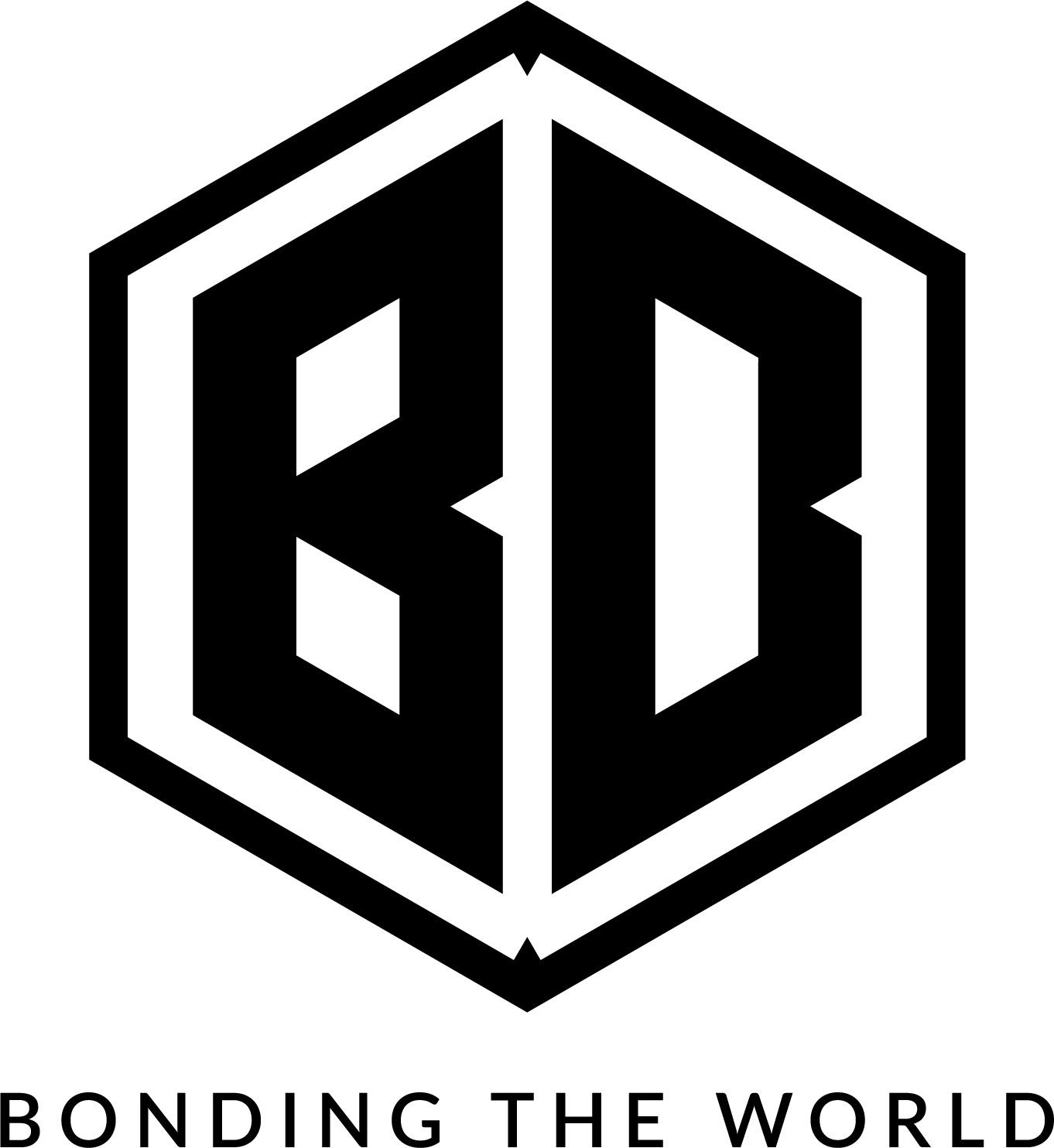Inquiry
Form loading...
In today's fast-paced industrial landscape, the demand for reliable and versatile adhesive solutions is paramount. One product that has garnered significant attention is "Clear Liquid Nails", renowned for its superior bonding strength and durability. According to a recent report by the Adhesive and Sealant Council, the global adhesive market is projected to reach $70 billion by 2025, with clear adhesives making up a substantial portion of that growth due to their aesthetic appeal and functionality. Industries ranging from construction to automotive are increasingly leveraging Clear Liquid Nails for their innovative applications, ensuring robust performance in various environmental conditions. This blog will explore the innovative uses of Clear Liquid Nails across different sectors, showcasing its adaptability and effectiveness in meeting modern demands.

Clear Liquid Nails have become remarkably versatile tools in construction and renovation projects, offering unique solutions across various applications. The strength and flexibility of these adhesives allow for secure bonding in different materials, such as wood, metal, and ceramics. This adaptability is essential when working on diverse structures, from residential buildings to commercial spaces, where both aesthetic appeal and robust connections are necessary.
Moreover, the innovative nature of Clear Liquid Nails has mirrored advancements in engineering fluid interfaces. Just as researchers are developing magnetic-actuated systems for manipulating fluids, the construction industry benefits from the precise application and controlled curing properties of these adhesives. This ensures that renovation projects not only meet structural integrity standards but also embrace the unique design specifications demanded by modern architecture. Whether it's for seamless finishes or durable fixtures, the versatility of Clear Liquid Nails continues to transform the way construction and renovation projects are approached, ultimately enhancing both functionality and craftsmanship.
In the automotive manufacturing industry, the integration of advanced adhesive solutions, such as the best clear liquid nails, is transforming traditional assembly processes. These innovative adhesives offer exceptional bonding strength and flexibility, allowing for lightweight construction that enhances fuel efficiency and overall performance. Manufacturers are increasingly turning to these solutions not only for their strength but also for their resistance to extreme temperatures and environmental conditions, making them ideal for various automotive applications.
When incorporating clear liquid nails into automotive designs, consider these tips:
The application of these advanced adhesives is not limited to structural components; they are also being utilized in interior fittings and electronic assemblies, showcasing their versatility. By adopting these innovative adhesive solutions, automotive manufacturers are not just optimizing their production processes but also pushing the boundaries of design and sustainability in the industry.
In today's fast-paced industrial landscape, sustainability has emerged as a crucial focus for businesses across various sectors. The packaging industry, in particular, is making significant strides toward eco-friendliness, and innovative products like
clear liquid nails play a pivotal role in these sustainability efforts. According to a recent report by Smithers Pira, the global sustainable packaging market is projected to reach $500 billion by 2027, fueled by heightened consumer demand for eco-conscious products. Clear liquid nails, known for their superior bonding capabilities and versatility, are increasingly being utilized to minimize waste in packaging materials.
One of the standout features of best clear liquid nails is their ability to replace traditional adhesive methods that often involve single-use plastics. By providing a robust alternative that requires less material while maintaining strength and durability, these liquid adhesives contribute to reducing overall packaging waste. A study from the Sustainable Packaging Coalition indicates that nearly 30% of packaging waste results from adhesive materials used in product assembly. By integrating clear liquid nails into packaging solutions, manufacturers can streamline processes and cut down on excess materials, thereby aligning with sustainability goals.
This approach not only meets regulatory demands but also enhances brand reputation among eco-conscious consumers, creating a tangible impact on the industry’s environmental footprint.
Clear liquid nails have revolutionized the way homeowners approach interior design, offering versatile and innovative solutions for various décor challenges. One of the most creative applications is in attaching decorative elements such as moldings, trims, and wall art. Unlike traditional adhesives, clear liquid nails bond quickly and provide a clean finish without the mess of visible glue lines, making them perfect for enhancing aesthetic appeal. Homeowners can now experiment with diverse materials and textures, creating stunning focal points in their living spaces.
Additionally, clear liquid nails are ideal for DIY projects that require a strong, lasting bond. For instance, revamping furniture with unique paint techniques and decorative accents has never been easier. Whether it's adhering fabric to surfaces or reinforcing joins on refurbished pieces, this adhesive allows for flexibility and creativity. Interior designers and DIY enthusiasts alike are using clear liquid nails to transform ordinary items into extraordinary décor pieces, showcasing their creativity while ensuring durability and style in their home environments.
This chart illustrates the innovative applications of clear liquid nails in various aspects of interior design. The data showcases the percentage of usage frequency across different categories such as furniture assembly, wall decor, flooring installation, craft projects, and repair work, demonstrating the versatility and importance of clear liquid nails in enhancing home décor.
The role of clear liquid nails is increasingly becoming significant in emerging technologies and industries, particularly due to their versatility and strong bonding properties. According to a recent market research report by Technavio, the global adhesive market is expected to grow at a compound annual growth rate (CAGR) of over 5% through 2025, with clear adhesives like liquid nails playing a prominent role in this expansion. The construction and automotive sectors are particularly driving this growth, as manufacturers look for innovative solutions to improve safety and enhance structural integrity.
In the context of the electronics industry, clear liquid nails are being utilized for their ease of application and quick-drying capabilities. A study by Smithers Pira indicates that the demand for electronic adhesives is projected to reach USD 9.3 billion by 2024, driven by advances in miniaturization and the greater need for reliable bonding in compact devices. This trend underscores the importance of clear liquid nails in providing reliable adhesion that meets the rigorous standards of modern technology, enabling the development of lighter, thinner, and more efficient electronic assemblies.
Additionally, the trend towards sustainable building practices has seen the rise of eco-friendly clear liquid nails formulated with lower volatile organic compounds (VOCs). According to the Environmental Protection Agency (EPA), VOC emissions from adhesives and sealants can significantly impact indoor air quality. Consequently, as industries pivot toward greener solutions, clear liquid nails that minimize environmental impact will become even more integral to construction and manufacturing sectors, helping to pave the way for a future that aligns with sustainability goals.
